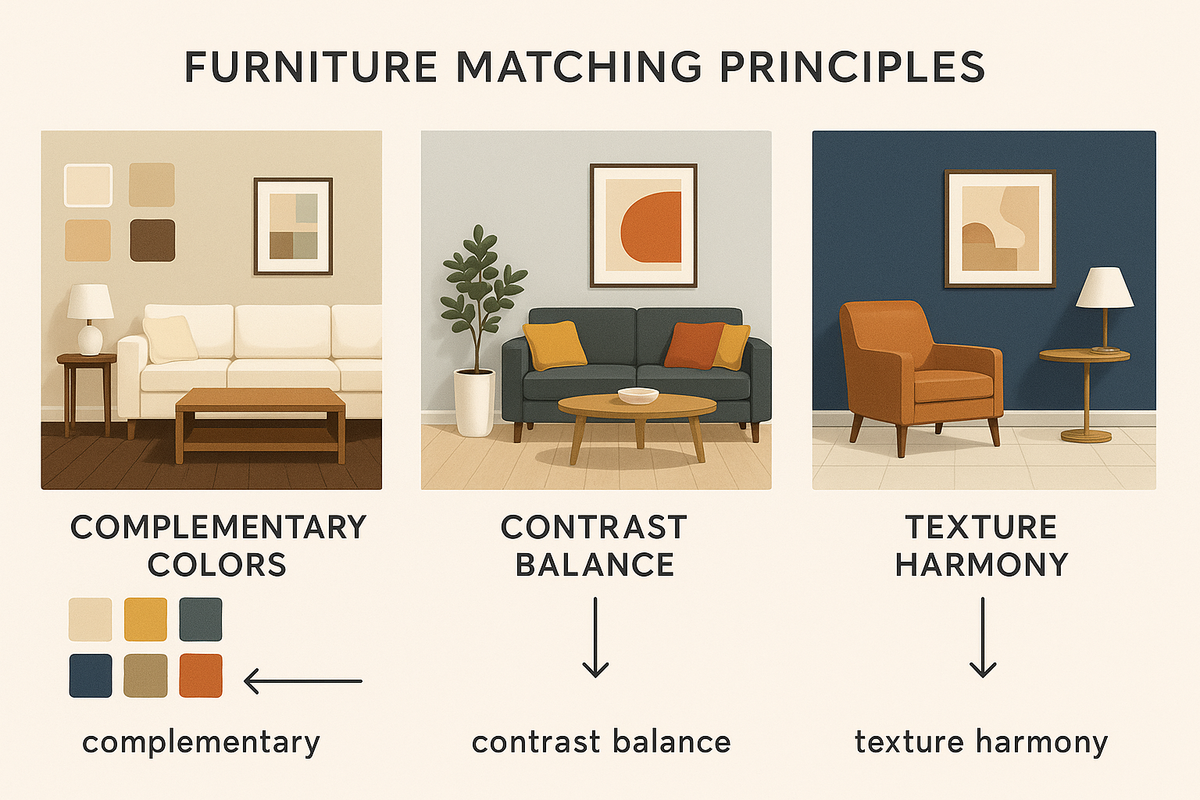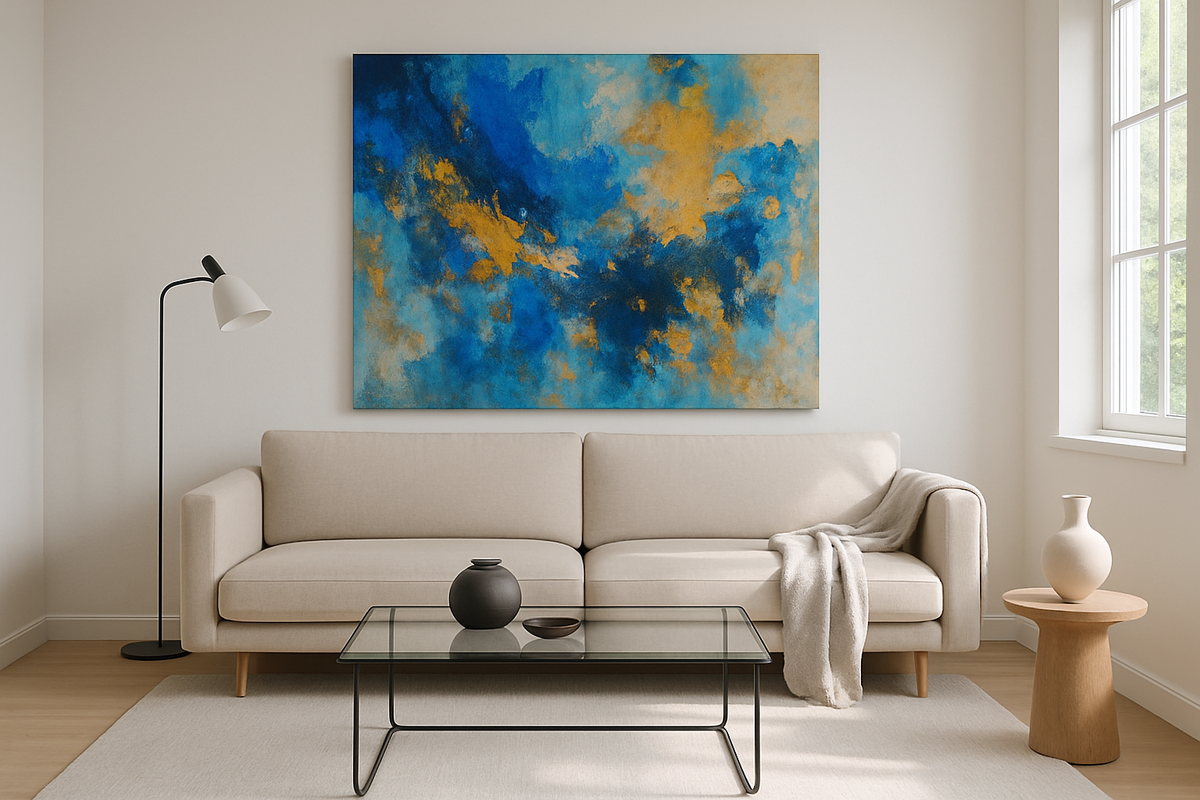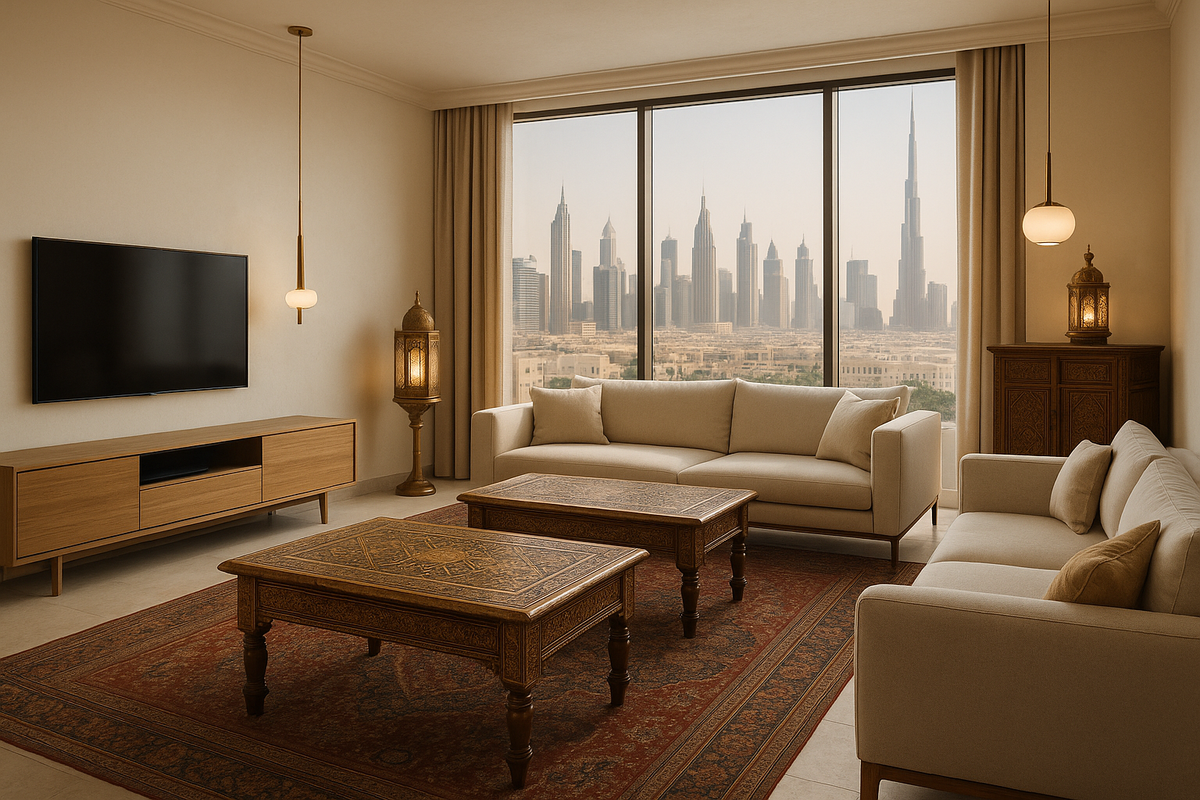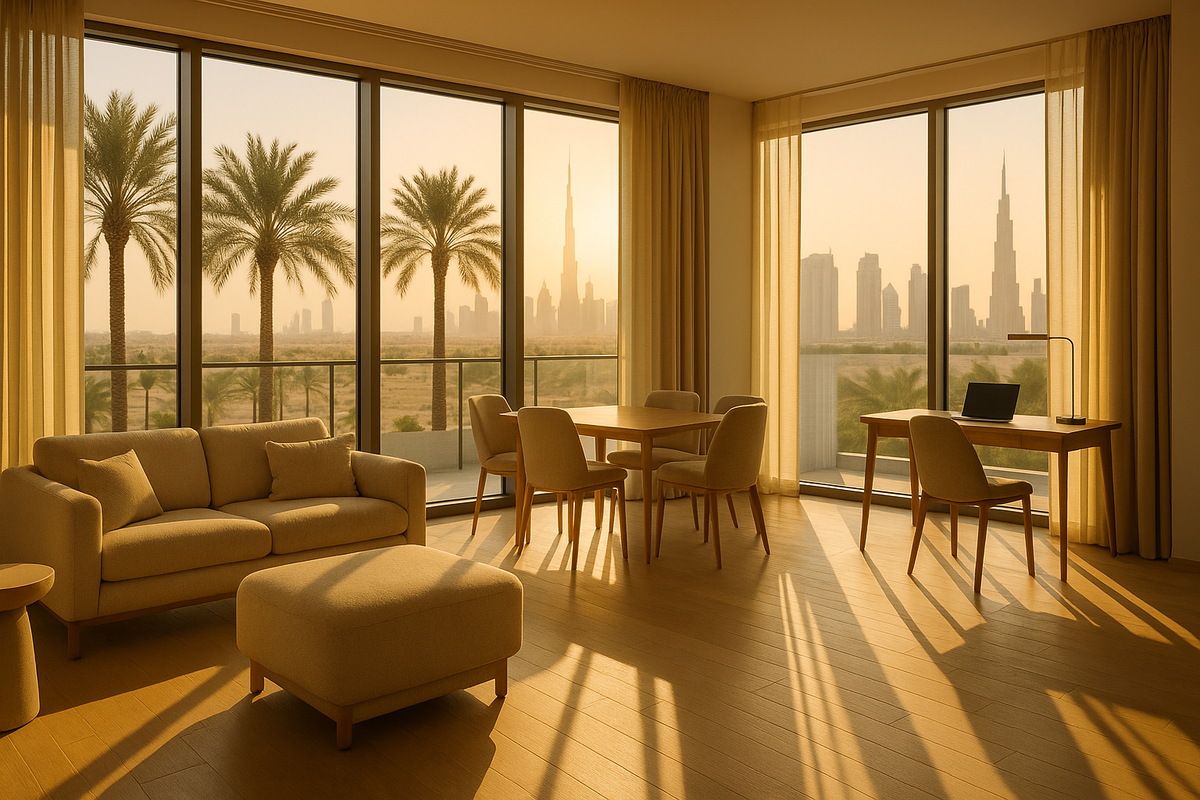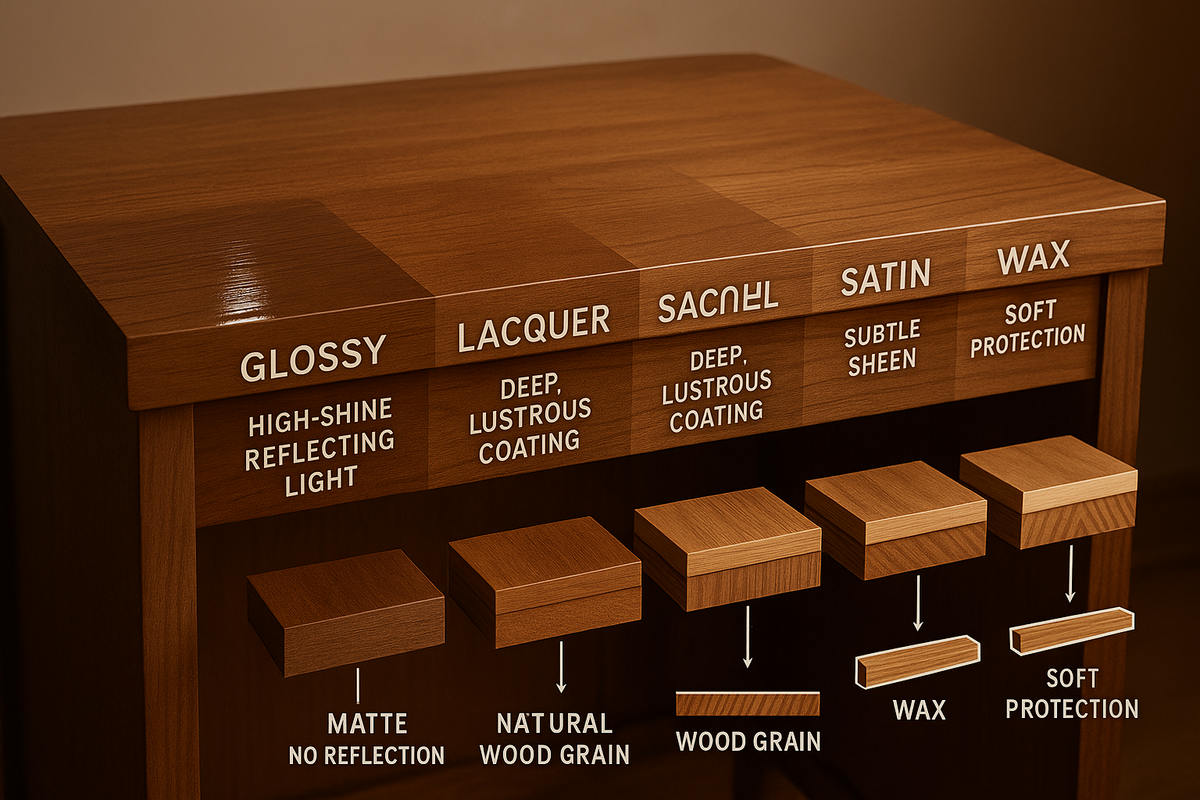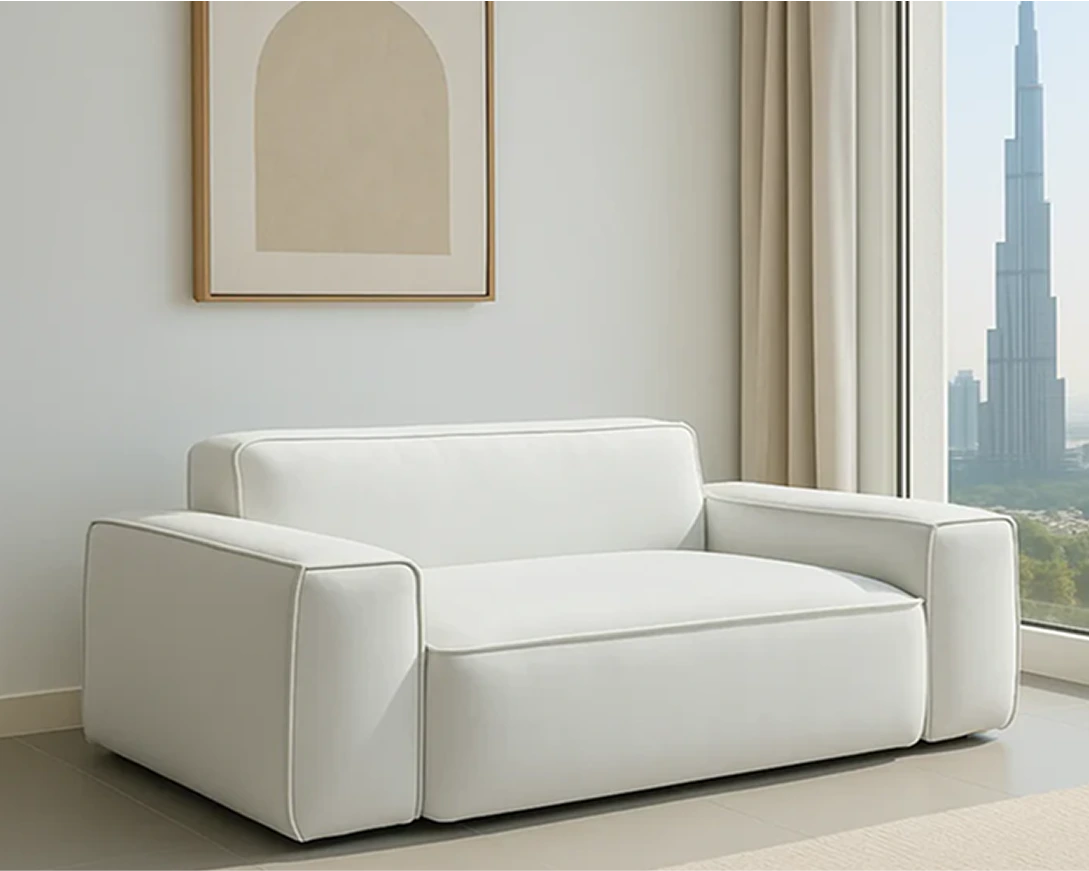Dubai’s rapid urban growth has enhanced the popularity of co-living spaces, where affordability, community, and convenience come together. Shared living requires furniture that is multi-functional, space-efficient, and robust enough to handle high use. This comprehensive guide helps you to navigate the complexities of furnishing co-living apartments in Dubai. From choosing the right furniture pieces to maintenance, this guide covers every facet for a hassle-free experience.
Understanding Shared & Co-Living Spaces in Dubai
What is a co-living space and why is it growing in Dubai?
Co-living spaces are residential units designed for multiple tenants sharing common areas but having private bedrooms. Dubai’s soaring rent prices, international workforce, and a desire for community-driven lifestyles have accelerated this trend. Flexible leasing terms and fully furnished units appeal to young professionals and digital nomads alike. Real estate developers increasingly focus on ready-to-move-in co-living apartments featuring furniture optimized for shared use.
Key challenges in furnishing shared apartments
Furnishing shared apartments involves overcoming several obstacles: limited square footage, diverse tenant needs, and constant wear and tear. Privacy concerns require layouts that balance openness with personal boundaries. Frequent tenant turnover means furniture must be durable yet easy to move or reconfigure. Storage space is at a premium, necessitating clever, multi-purpose solutions. Additionally, cultural diversity among tenants may require adaptable designs catering to various lifestyles.
Benefits of choosing modular, multi-functional furniture
Modular furniture provides a dynamic way to customize spaces as tenant composition changes. For example, sectional sofas with removable pieces or sofa beds that convert into guest rooms help maximize space. Multi-functional items, like storage ottomans or foldable dining tables, add utility without crowding the room. These designs reduce the need to replace furniture frequently, lowering costs over time.
Essential Furniture for Shared Living
Multi-functional sofas, sofa beds & sectionals
Multi-functional sofas serve dual purposes: comfortable seating and additional sleeping space. Sectional sofas with detachable components can be rearranged to fit different room sizes or tenant numbers. In Dubai’s co-living setups, sofa beds with easy-open mechanisms are favored for quick guest accommodations. For example, a three-seater sectional with chaise lounge can be split into smaller sofas or combined for large gatherings.
Space-saving beds (bunk beds, trundle beds, Murphy beds)
Space-saving beds are crucial where floor space is limited. Bunk beds provide vertical sleeping arrangements for multiple tenants, while trundle beds offer an extra mattress stored underneath. Murphy beds fold into walls, freeing up daytime space. Modern Murphy beds often include built-in desks or shelving, increasing functionality. Dubai apartments benefit greatly from these space-conscious designs, especially in shared bedrooms under 150 square feet.
Dining solutions for communal areas
Communal dining needs flexible furniture to accommodate varying numbers of residents. Expandable dining tables can comfortably seat four during weekdays and expand for weekend gatherings. Stackable or foldable chairs optimize storage when not in use. Bar-height counters with stools provide casual dining and reduce the footprint. Such adaptability fosters social interaction without permanent clutter.
Shared workspace furniture (desks, ergonomic chairs)
With remote working on the rise, shared workspaces are now integral to co-living apartments. Desks with adjustable heights and ergonomic chairs support productivity and health. Modular desks can be linked for collaborative work or separated for privacy. Rolling chairs facilitate movement between rooms or communal areas. Dubai tenants benefit from these setups due to increasing freelance and startup culture.
Smart storage units (wardrobes, under-bed storage, modular shelving)
Efficient storage is the backbone of organized shared living. Wardrobes with multiple compartments prevent clutter and allow personalized space allocation. Under-bed drawers and modular shelving systems exploit vertical space to hold clothes, shoes, and personal items. Open shelving helps visually open rooms but requires careful styling. Smart storage solutions are especially useful in Dubai’s small apartments where every inch counts.
How to Choose Furniture for Co-Living Spaces
Space Optimization Strategies for Small Apartments
-
Utilize Vertical Space: Install wall-mounted shelves and hanging storage units to keep floors clear while providing ample storage.
-
Fold-away Furniture: Use foldable desks and wall beds (Murphy beds) that tuck away when not needed, maximizing living area.
-
Light Colors and Mirrors: Choose light-colored furniture and place mirrors strategically to visually expand space and reflect natural light.
-
Modular Pieces: Opt for modular sofas and storage that can be rearranged or stacked according to tenant needs and room shape.
-
Avoid Bulkiness: Select slim, lightweight furniture with clean lines to maintain open pathways and prevent cramped feelings.
-
Multi-Purpose Items: Invest in furniture with dual functions, like storage ottomans, extendable tables, and sofa beds.
-
Clear Circulation Paths: Ensure furniture placement allows easy movement and prevents obstruction, improving flow and safety.
Material Selection for Durability & Easy Cleaning
-
Strong Frame Materials: Choose hardwood or metal frames for lasting structural support under heavy use.
-
Engineered Wood: Use engineered wood as a cost-effective, durable alternative for shelving and tables.
-
Stain-Resistant Upholstery: Select materials like microfiber, leather, or high-quality synthetics that repel stains and dry quickly.
-
Protective Surface Finishes: Opt for laminate, melamine, or UV-resistant coatings on tabletops and shelving to resist scratches, heat, and fading.
-
Easy Maintenance: Prefer wipe-clean surfaces and removable, washable slipcovers to reduce cleaning effort.
-
Non-Toxic Finishes: Prioritize low-VOC paints and coatings for health-safe interiors, especially important for long-term residents.
Safety, Comfort & Tenant-Friendly Design Considerations
-
Rounded Corners and Edges: Minimize sharp edges on tables and desks to prevent injuries from accidental bumps.
-
Non-Slip Feet: Ensure chairs and tables have rubberized or textured feet to avoid sliding on smooth floors.
-
Anti-Tip Mechanisms: Use furniture with secure fittings and anti-tip features to withstand active use and rearrangement.
-
Ergonomic Design: Provide cushions and seating shaped to support posture and reduce fatigue, improving tenant comfort.
-
Heat and UV Resistance: Select materials and finishes that withstand Dubai’s intense sun and heat without degrading or fading.
-
Non-Toxic Materials: Use non-toxic paints and fabrics to improve indoor air quality and tenant health.
Budget vs. Luxury Furniture: Which is Better for Shared Use?
-
Budget Furniture Advantages:
-
Lower upfront cost suitable for short-term or high-turnover rentals.
-
Wide availability and easy replacement options.
-
Often lighter and easier to move.
-
Budget Furniture Disadvantages:
-
Lower durability leading to faster wear and tear.
-
Basic aesthetics with limited style options.
-
May require frequent replacements, increasing long-term costs.
-
Luxury Furniture Advantages:
-
Superior materials and craftsmanship ensure longevity.
-
Stylish designs that enhance appeal to tenants and potential buyers.
-
Often comes with extended warranties and better after-sales support.
-
Luxury Furniture Disadvantages:
-
Higher initial investment may deter budget-conscious landlords.
-
Bulkier pieces sometimes harder to move or reconfigure.
-
Balanced Approach:
-
Invest in luxury furniture for high-use communal areas (sofas, dining tables).
-
Use budget-friendly options for private bedrooms and low-traffic areas.
-
Consider furniture with warranties to protect the investment.
Furniture Layout Planning for Communal Living
A well-planned layout promotes harmonious coexistence by balancing shared social spaces with private retreats. Use modular shelving units, bookcases, or room dividers to create semi-private zones within open-plan apartments. These partitions provide sound and visual privacy without complete isolation.
Arrange seating in small clusters to encourage conversation and social interaction without overcrowding. Avoid lining furniture directly against walls, which can feel confining, and instead create inviting pockets that facilitate movement.
Maintain clear circulation paths free of obstacles to enhance safety and ease of access. Flexible furniture on casters enables tenants or landlords to quickly reconfigure spaces for different purposes, such as meetings, gatherings, or quiet study time.
Incorporating multi-use furniture—such as ottomans that double as storage or coffee tables that extend into dining surfaces—maximizes spatial efficiency while catering to communal lifestyles.
How to Combine Different Roommates’ Styles Harmoniously
Blending diverse personal tastes into a cohesive living environment requires thoughtful design choices. Starting with a neutral color palette for large furniture pieces or walls unifies varying styles and reduces visual clutter. Neutral tones like beige, gray, or soft pastels act as a calm backdrop that accommodates vibrant accent items.
Modular accessories like cushions, rugs, and curtains allow each roommate to express their individuality in a removable and non-permanent way. Removable wallpapers and interchangeable decor add flexibility without commitment, making it easy to update styles between tenant turnovers.
Incorporating shared statement pieces—such as a bold sectional sofa, an eye-catching dining table, or a designer lighting fixture—creates focal points that draw the room together visually.
Choosing versatile design themes such as Scandinavian minimalism or modern contemporary helps simplify the blending process because of their clean lines, functional focus, and neutral color bases. These styles are both trendy and timeless, appealing to a wide demographic.
This combination of neutral foundations with personalized accents fosters a harmonious atmosphere that respects each roommate’s preferences while maintaining overall unity.
Best Furniture Stores & Brands in Dubai for Co-Living Solutions
Top local brands offering modular and space-saving furniture
Klekktic, THE One, Pan Emirates, and Marina Home lead Dubai’s market for co-living furniture. They provide modular sofas, storage beds, and sectional dining sets tailored to small apartments. These brands emphasize customizable options and tenant-friendly materials.
Online furniture shopping options in the UAE
E-commerce platforms like IKEA UAE, HomeBox, Danube Home, and Amazon.ae provide wide selections. Filters for space-saving features and durability help buyers choose fitting products. Many offer same-day or next-day delivery with assembly services, crucial for quick turnovers in co-living units.
Price comparisons & delivery timelines
|
Store / Brand |
Furniture Type |
Avg. Price (AED) |
Delivery Timeframe |
Special Services |
|
Klekktic |
Modular Sofas |
3,500 – 7,000 |
7–14 days |
Customization, assembly |
|
THE One |
Sofa Beds, Dining Sets |
2,800 – 6,500 |
5–10 days |
Extended warranties |
|
IKEA UAE |
Murphy Beds, Storage |
1,500 – 4,500 |
3–7 days |
Flat-pack, assembly guides |
|
Pan Emirates |
Sectionals, Bunk Beds |
2,000 – 5,000 |
7–12 days |
Return policy, in-store support |
|
Marina Home |
Luxury Modular Sets |
4,000 – 12,000 |
10–15 days |
Premium materials, design consultation |
Dubai’s furniture market combines affordability with quality, allowing landlords and tenants to balance price and durability.
Custom-made furniture options for shared spaces
Local workshops craft custom Murphy beds, built-in wardrobes, and foldable tables. These tailor-made solutions maximize irregular floor plans and unique tenant requirements, offering precise fit and style integration.
Maintenance & Longevity in Shared Furniture
Cleaning tips for high-traffic furniture pieces
-
Vacuum Upholstery Weekly: Remove dust, crumbs, and debris that degrade fabric over time.
-
Use Fabric Protection Sprays: Create a barrier against stains and spills for easier cleanup.
-
Washable Slipcovers: Add removable and machine-washable covers for quick maintenance.
-
Wipe Hard Surfaces: Use non-abrasive, gentle cleaners to protect finishes on tables and shelves.
-
Avoid Harsh Chemicals: Protect paint and fabric finishes by using mild cleaning agents.
-
Limit Sun Exposure: Prevent fading by positioning furniture away from direct sunlight or using UV window films.
Repair, warranty, and after-sales services in Dubai
-
Select Brands with Warranties: Cover structural faults and accidental damage to reduce replacement costs.
-
Maintain Spare Parts: Keep extra cushions, screws, and legs for quick fixes and minimal downtime.
-
Professional Repairs: Use certified technicians for complex damage to extend furniture life.
-
Return and Exchange Policies: Choose sellers with clear and convenient after-sales policies.
How to rotate furniture to extend usability
-
Rotate Every 6 Months: Shift furniture between rooms to balance wear evenly.
-
Swap Communal and Private Use: Move sofas from living rooms to guest rooms to reduce constant heavy use.
-
Inspect Regularly: Check for damage during rotation to address issues early and prevent worsening.
Future Trends in Co-Living Furniture (2025 & Beyond)
Sustainable & eco-friendly furniture choices
Sustainability is gaining momentum with furniture made from recycled wood, bamboo, and low-VOC finishes. IKEA and Klekktic lead eco-friendly lines compatible with Dubai’s green building initiatives. These materials reduce environmental impact and appeal to conscious tenants.
Smart furniture (AI-integrated, tech-enabled storage solutions)
Tech-enhanced furniture integrates wireless charging, fold-out desks, and sensor-based lighting. Such innovations improve functionality and tenant experience in compact spaces. Smart storage adapts to user habits, optimizing space without manual effort.
Flexible designs for evolving co-living needs
Furniture that adapts to lifestyle changes—folding walls, modular pods, movable partitions—support dynamic living. Landlords can reconfigure layouts without costly renovations, responding swiftly to tenant demands.
FAQs on Furniture for Shared Living in Dubai
What’s the most cost-effective furniture for shared apartments?
Modular sofas, bunk beds, and folding dining tables offer the best value. Their multi-functionality reduces the need for additional items, cutting overall costs.
Where can I rent furniture for co-living spaces in Dubai?
Companies like The Furniture Rental Company and Indigo Living provide short-term rental packages. These include delivery, setup, and maintenance, ideal for temporary tenants or landlords testing furnishing options.
How to furnish a small room for multiple tenants?
Maximize vertical space with bunk beds, wall-mounted desks, and under-bed drawers. Room dividers and modular wardrobes create personal zones while maintaining shared functionality.
Are modular furniture sets worth the investment?
Yes. They allow flexible reconfiguration as tenant needs evolve, extending furniture lifespan and reducing replacement frequency.
Tips for moving and assembling shared furniture easily
Opt for lightweight, flat-pack furniture with quick-lock systems. Modular sofas and collapsible tables simplify moves and setup, saving time and effort.

